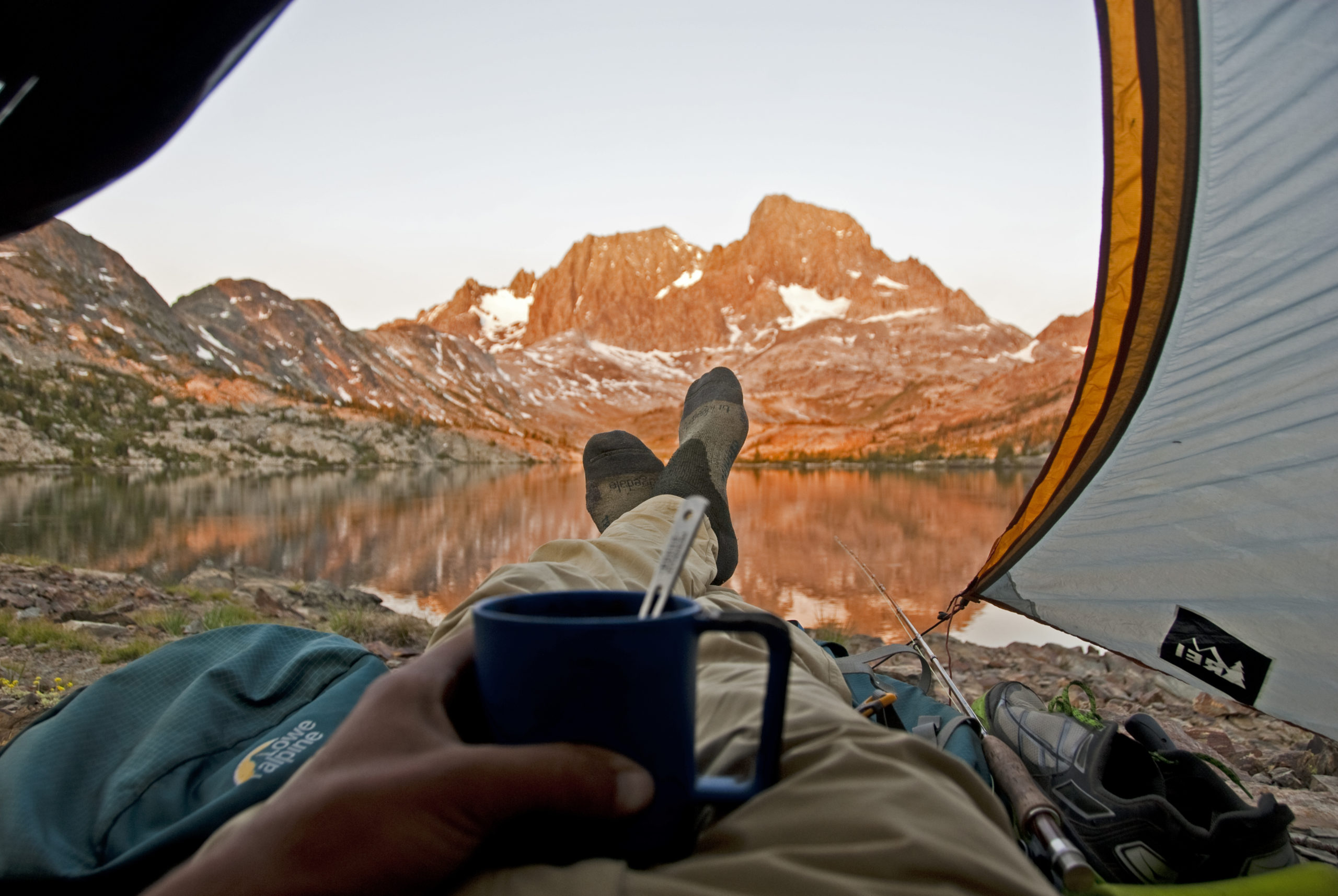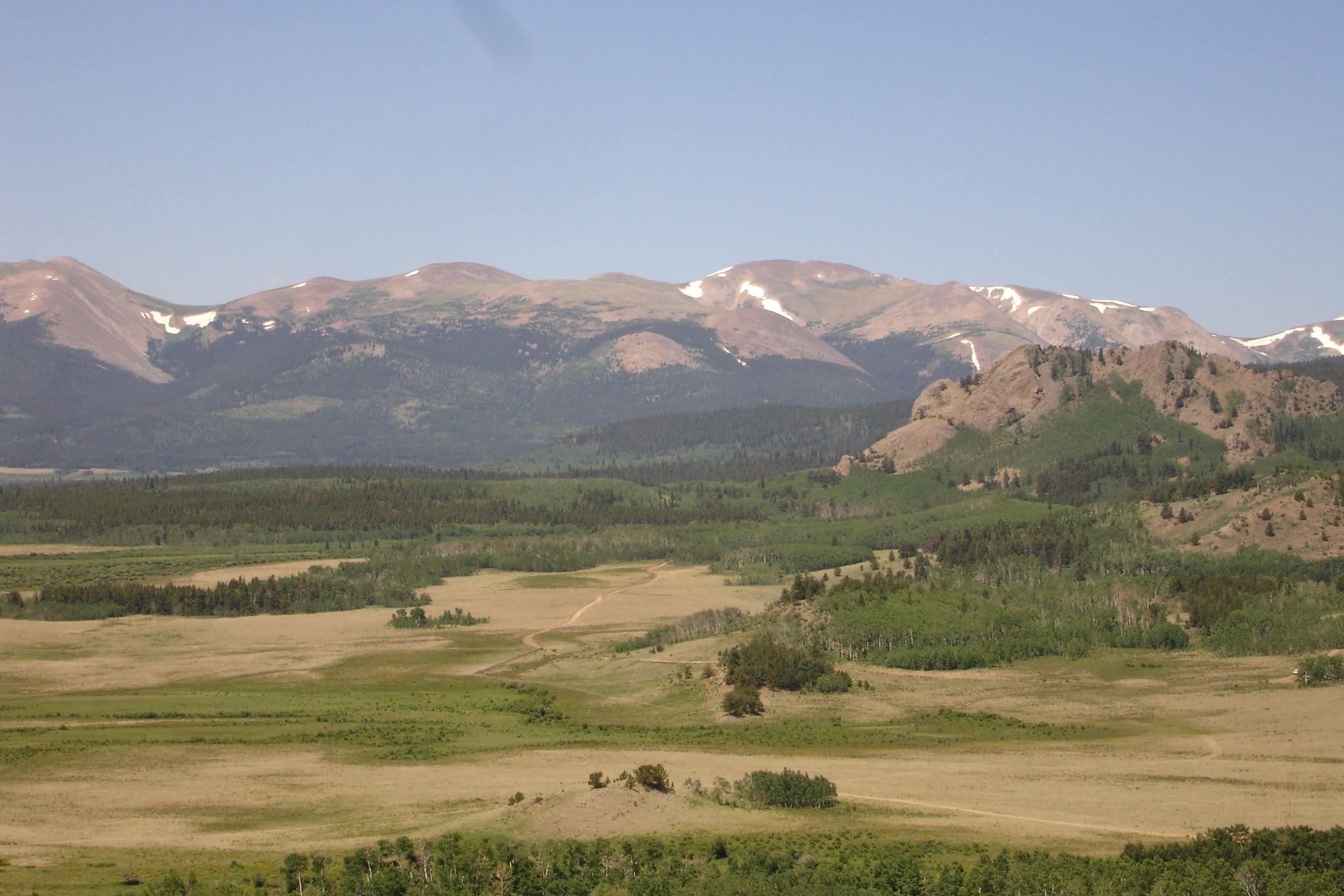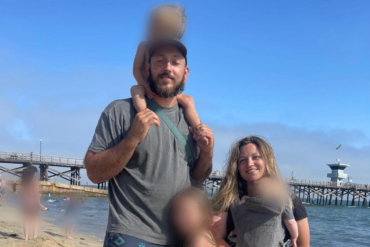I am not an ultralight-gear fanatic. I wasn’t an experienced backpacker when I set out. Shockingly, I wasn’t someone with a plan. I was just someone with a passion, and a serious need to get away from my darkness and into the light of the wilderness.
Here is the gear that I used on my hike along the Pacific Crest Trail from head to toe, day and night. Yes, there’s lots of great gear out there, so how did this gear make the cut?
Through a combination of trial and error, a few handouts, some work ethic, and downright beginner’s luck. And I didn’t need to save thousands of dollars to purchase them, or research high and low, or obsess about ounces and tag-cutting. I did quite the opposite in fact. I somewhat closed my eyes and hoped for the best. And somehow it got me to the monument. Here’s how this process can get you there, too!
Gear on My Person (aka Apparel)
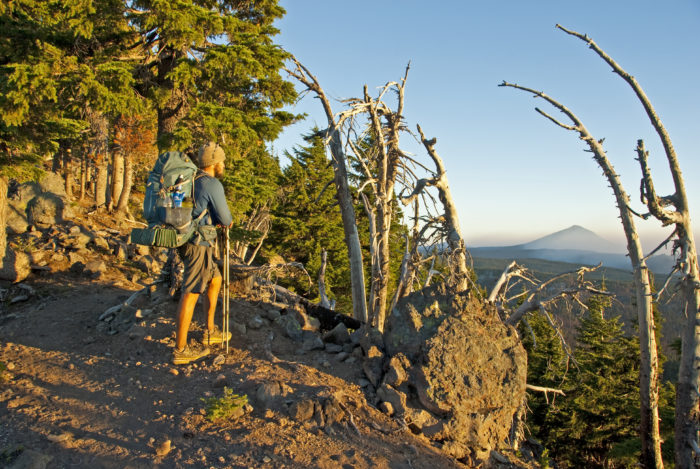
Tops
“Cotton kills,” was a motto I learned early on hiking the trail. A quick visit to REI and its polyester Active Pursuits shirts were my go-to choice. I bought two, one a long-sleeved and another a short-sleeved, and they accompanied me for the 2,650 miles of the trip.
I was also able to work out a small contract with Rab before I left on the hike. The brand provided me with its lightweight Phantom Pullover Rain Shell. I had to use this jacket extensively during the first 700 miles of trail, because I didn’t have a down jacket (until after the Sierras). Once I got to Northern California, Rab sent me its Microlight Alpine Down Jacket, and the cold nights were over.
Bottoms
I started out with a pair of prAna running shorts that aren’t made anymore, and ended up burning them by the fire one morning after a May snowstorm in California. So, I had to hike into town with a breezy, burnt pair of shorts and buy a Big 5 brand running short that I kept (and that did the job) for the remaining 2,400 miles of trail.
I also carried with me a pair of Patagonia’s Capilene long underwear top and bottoms. I had already owned them before the hike. I used them mostly for sleeping, and I still own and use to this day.
For pants, I purchased REI’s Co-op waterproof Sahara Cargo pants. They collapsed down and stuffed into whatever space was available within my backpack.
Shoes

I will just go out and say it. I changed my shoes four times on trail. I started out with a pair of Nike Air street running shoes. Yes, you read that right: Nike street shoes. I wore them for a good 200 miles before finally learning from other hikers that they weren’t going to cut it. And blisters, aches, and potential stress fractures were guaranteed.
I also learned from fellow hikers with much more experience than I that a pair of trail running shoes (not boots) were the optimal choice. And out of all of them, Brooks’ Cascadias were the most popular. I bought some and wore them for over 500 miles, but around mile 400, the crease where the toes bend at each step always ripped open. Many hikers on trail had this issue, both men and women.
So finally after trying Nike, Brooks, and even HOKAs (which is another story altogether), I landed with Altra Lone Peaks. They were a shoe I finally picked up in Oregon and wore to the Canadian border and well beyond. I even laced them up yesterday and went for a trail run while brainstorming what gear to cover in this article.
Backpack
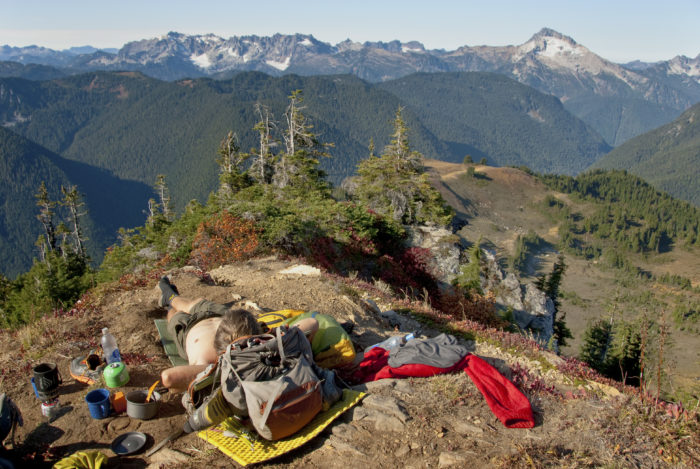
My connection with Rab started with my very first online blog post for the backpacking company Lowe Alpine (now owned by Rab). Back when I purchased my sleeping bag by The North Face, I also purchased a Lowe Alpine Tundra 65L backpack for the same reason: I liked the color (I know).
Fast forward a few years, and I had used that backpack to travel all over the world on five continents. I’d keep track of the number of buses, planes, boats, taxis, etc., and Lowe Alpine posted it on their website. Shortly after I mentioned I was hiking the PCT, Lowe Alpine sent me the newer 65L Cerro Torre for the trail. I used that pack for each mile of PCT, and had zero issues with it.
I still use it today.
Gear for Sleeping
Tent
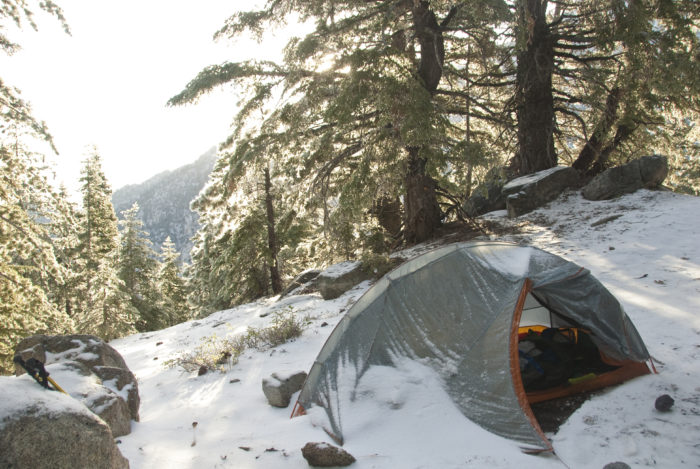
Disclaimer: While I did opt for a large percentage of gear from REI, please note REI did not sponsor my hike. For my tent, the now-discontinued Quarter Dome 1 was the choice. From my research, I knew I wanted a lightweight tent that was easy to set up, tear down, and handle most of the weather environments on trail. The Quarter Dome was the most economical at the time.
Sleeping Pad
I started out with an EXPED air mattress. A week into the PCT, I popped it. But a friend was leaving trail for personal reasons, and he left me his Thermarest Z-lite foldable sleeping pad. It’s lightweight and won’t pop, which was enough for me. To this day, I use this pad on nearly every backcountry trip.
Sleeping Bag
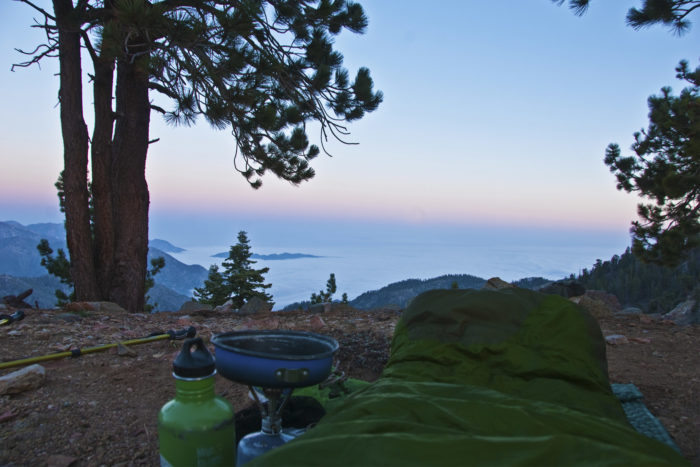
The sleeping bag I had at the time was The North Face Snowshoe 0-degree bag. It weighed over 3 pounds and packed so large that my 65L backpack had trouble swallowing it. But I didn’t know any better. I bought the bag years prior because I liked the color of it, and it had a zero-degree rating.
I also didn’t know that the proper storage technique for sleeping bags was to not leave them in their stuff sacks for months at a time, as the loft and down will condense and lose their fluff and thermoregulation. So I had a heavy, horrible-packing, and non-lofty sleeping bag for my 6 months on trail.
Gear for Cooking
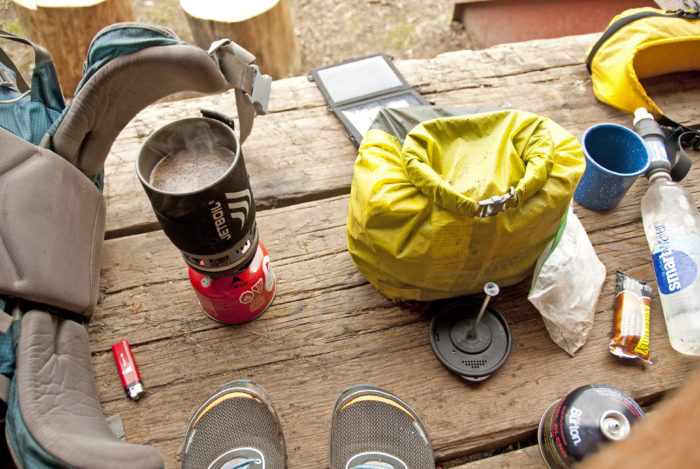
Stove
I started out with the MSR Pocket Rocket. It’s this tiny little thing that packed into a small plastic container that I still own today. I carried it with me and used it until Central Oregon when I discovered that the Jetboil Zip had a French press adapter for its stove system and switched over ASAP. Since that moment, my life has changed forever. Long gone are the days of instant coffee.
Utensils
With me into the woods comes my Swiss Army knife that I have had since I was a kid. I don’t care how heavy it is or what people may say about them, it is just one of those items like a toothbrush that goes with me everywhere.
I carried with me a Sea to Summit Alpha Light Long Spork and a Vargo titanium short spork. The long Sea to Summit spork not only made it easy to reach into the depths of each Mountain House MRE, but also has a permanent home in my kit for each endeavor outdoors.
Food
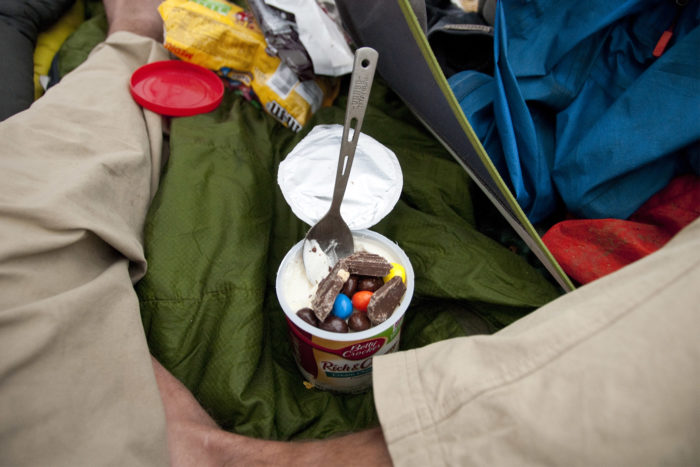
On trail, I started out like everyone, obsessing over ready meals like Mountain House. Then I went onto instant oatmeal, mashed potatoes, ramen, and all the bars under the sun. Before long, I was packing out fried chicken, beer, fruit, pizza, you name it.
Food is something that I craved and salivated over when I survived a long day up a mountain pass. So, I treated myself. I stopped stressing about ultra-lite and packability. When it came to it, if I wanted it, all I had to accept was that I had to carry it. And once that decision was made, I was stoked that I packed out what I did.
Miscellaneous Gear
Hiking Poles
I had never used poles prior to the PCT, and now I will turn around at a trailhead and head home if I forget them. That said, I had no knowledge of this at the time and so I bought a cheap pair from Walmart that lasted me the entire 2,650 miles.
Water Filter
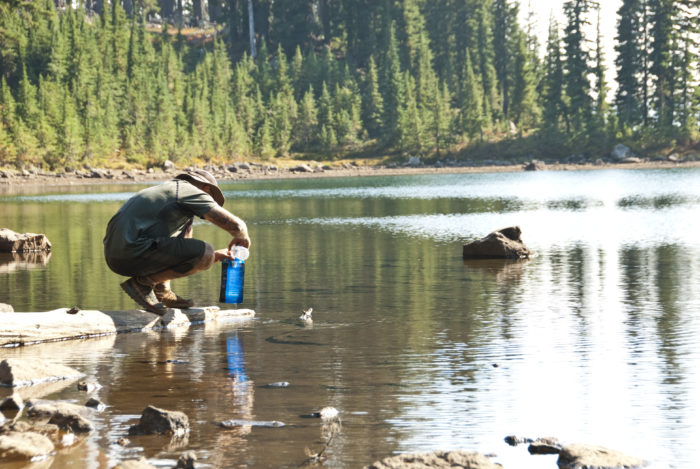
The same friend that bailed out and gave me his Thermarest Z-lite pad, recommended that I purchase the Sawyer Squeeze water filter. The filter not only worked great but also gave effort-free reliability when my throat was parched and the slog through the desert was excruciating.
I will say, however, that the bags that Sawyer provided with the filter were garbage. They would last a few squeezes before a hole was known and we all had to filter using plastic water bottles. The SmartWater bottles seemed to be the best-threaded fit for the Sawyer.
Sunglasses
For me, sunglasses were always the gas station specials. I thought about spending copious amounts of money on name-brand glass with good UV protection and polarization because of my sensitive blue eyes. But I am too clumsy and could see myself cursing at the decision after I broke them. The $20 specials were my go-to.
Bear Can
I needed a bear can when entering Kings Canyon and sent mine to Kennedy Meadows, before the Sierra section. Then sent it home shortly after Yosemite. But Bear Vault was my choice for two reasons: I already owned it and was one of two choices on the market, at the time.
Fly Rod
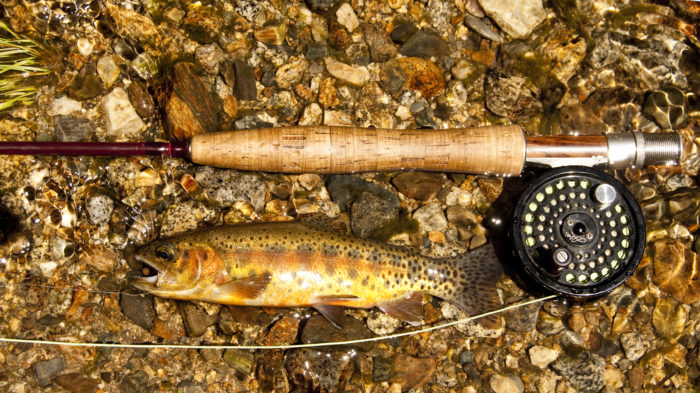
I am an avid fly fisherman and there was no way I was going to hike through some of the most gorgeous trout water on the planet without bringing a rod. So I had a three-piece R.L. Winston fly rod with an Abel reel and a selection of flies that packed into a small container.
Tripod and Camera
I brought a small and collapsible Slik Tripod that fit in the side compartment of my backpack.
My camera was a huge Nikon D200 DSLR. But I didn’t care about its size or weight; it was coming with me on the trail or there was no point in me even being out there.
The Gear I Sent Home
Rain Pants
Rain pants were a quick one I sent home. They took up space, made hiking really uncomfortable, and ultimately, still got me wet.
Water Bladder
The water bladder was another one. I stressed about water in Southern California and parts of Northern California. But at the end of the day, none of us really used them. And it was surprising how heavy they were, even dry.
Solar Panel
I thought I was going to need one, given the fact I had to use my phone to write articles and share to social media. But airplane mode is amazing, and a simple battery pack usually made it into town once a week.
Conclusion
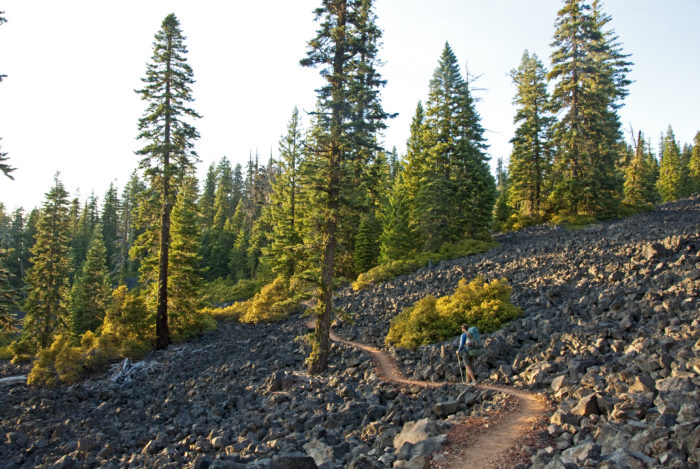
I think the greatest thing that happened to me on trail was that I learned as I went. And this is some of the best advice any hiker could get. I suffered with everyone else, and then found my groove and never deviated from that path.
“Hike your own hike,” was an expression I learned very early on and we all took it to heart. That is all the sentiment that I had to learn through the mistakes I made early on. But if I hadn’t made any trail or gear mistakes, I also wouldn’t have had those shared experiences with others on trail.
They helped me refine my kit, suggest shoes to wear, showed me where to get water, and let me try their French-pressed coffee or Pop Tarts with peanut butter and Fritos on top. And I wouldn’t change any of those experiences for anything in the world.
So, from one newbie thru-hiker to all those hopeful PCTers out there, just remember not to stress and learn as you go. There are 2,650 miles on that trail, and you can’t do any of them until you make the first step.
